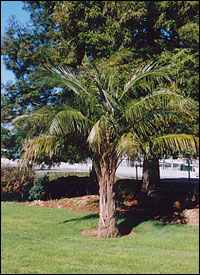~ Parajubaea cocoides ~
Quito Coconut, Cold Hardy Coconut
Height: 60' Growth Rate: medium to fast Climate Zones: 14-17 to 16 degrees Origin: Ecuador
Now
here's a cool palm! Parajubaea cocoides, or the "Quito
Coconut" as they prefer to call it in its native home of highland
Ecuador, is a gorgeous feather type palm very reminiscent of the True
Coconut Palm (Cocos nucifera) which is impossible to grow in
Northern Calfornia without extreme microclimate modification. Not to get
off the subject, but there are a few rogue True Coconuts scattered around
Southern California which have weathered many Winters outdoors without
any special protection- the most famous being the "Newport
Coconut". But since we
don't live in Newport Beach, our next best option for coconuts is Parajubaea.
Parajubaea is closely aligned with the True Coconut tree, as is Jubaea chilensis and several other rarer palms. It is thought that
over its course of evolution, Parajubaea and Cocos nucifera were the same plant and then became geographically separated; Cocos remaining in the lowland beach shores of the hot tropics,
while Parajubaea slowly and methodically climbed the Andes.
My personal theory on the separation is this: a random mutation occurred
in a True Coconut that produced abnormally small seeds. These seeds might
have been small enough for ground animals or large birds to carry and
relocate at higher elevations- thus eventually causing the palm to step
up the mountains through progressive generations like one would climb a
staircase. This may explain why, although almost exactly the same in
appearance and structure, the Cold Hardy Coconut seed is about 1/50th the
size of the True Coconut seed. The chief reason the True Coconut is not
naturally found at very high elevations is that its seed is too heavy and
large for animals to carry very far from where it fell. It chiefly relies
upon water and tides for its dispersal. There is probably a scientist out
there that might prove me wrong someday - but that's my story and I'm
sticking to it!
But we all know for sure what happens when you climb a tall mountain - it
gets colder as you go up. This is how Parajubaea gained its cold
hardiness. One of its cold protection adaptations was to keep its
insulative, hairy frond base material firmly attached to the trunk of the
tree to a much later stage than does the quickly self cleaning True
Coconut (you'd feel like getting naked too if you lived where the True
Coconuts do). Like Trachycarpus, the center heart of Parajubaea - which is the most cold sensitive part of the tree -
will always be encapsulated by this natural form of insulation unless
manually removed. As the tree grows older, and the heart moves higher up
following the canopy, the lower fronds do eventually fall off leaving a
clean, hard trunk.
Parajubaea can grow as fast as a queen palm if situated in the
right environment. Since the tree is from a relatively, and constantly,
cool climate at elevations ranging from 3000' - 9000' in the Andes of
South America, Parajubaea dislikes heat. Heat seems to be fatal to
the tree in inland locations and many parts of Southern California.
Finally, we have a tropical looking palm that thrives in Northern
California better than Southern California- it=92s almost always the other
way around. The ideal climate for Parajubaea is the fog
tempered stretches of Northern California coastal climate zone 17 such as
San Francisco, Oakland, Monterey . . . etc. Remarkably, during the great
freeze of 1989, a tree survived 16 degrees at a secret garden in Walnut
Creek, CA known only to palm society members. Wanna see it? Join the Palm
Society and maybe there will
be a meeting there again. However, there are even better examples at Lake
Merrit Garden Center in
Oakland- which loyal palm society members maintain at their own
expense.
What's so fun about Parajubaea- besides the miniature edible
coconuts it produces- is the fact that you can watch the plant actively
grow right through the Winter and into Spring unlike most palms which
shut down their growth in November and don't resume growing until April.
The immature fronds have a very beautiful tropical look about them as
they are unsplit (entire). When the tree reaches 4' - 6', the fronds
split up looking similar to the King Palm. The fronds are dark green on
their upper sides, and silvery on their undersides. The tree can have an
ultimate spread of 25' at maturity and can reach 60 feet tall or higher.
The tree grows at a fairly rapid clip and seems to be able to put on a
foot of trunk per year once it reaches maturity in 10 - 20 years after
germination. Several other newly available species of Parajubaea look very promising for our region as well and we will be seeking them
out to offer at our nursery in the future.
| Click any photo to view an enlarged, printable cutsheet | |||
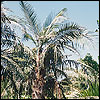 |
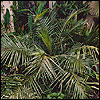 |
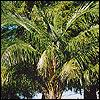 |
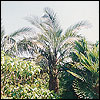 |
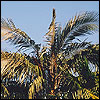 |
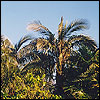 |
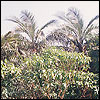 |
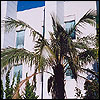 |

